Among many Moabites who instinctively label themselves “progressive environmentalists,” the collective vision for a better future in Southeast Utah is frequently and inextricably linked to one word— it’s almost a rallying point:
‘Sustainability.’
I see the word enthusiastically bandied about and with great confidence. Several environmental organizations embrace the idea of a sustainable future for Moab and believe the path to sustainability is within their grasp.
One group wants to “build a sustainable community and teach others how to do it.” It states, “We build energy-efficient housing, provide education on sustainability, and improve the housing conditions of the workforce through an affordable program.”
Another non-profit, “is dedicated to facilitating an open-minded, non-partisan discussion about sustainability in Moab and Grand County Utah, and across the larger southwest region.”
The Chamber of Commerce points out that their, “primary purpose…is to ensure economic success and sustainability for your business and improved quality of life for our community.”
The City of Moab gets in the act as well with its “Green Power in Moab” program and claims the community is, “a leader in sustainable energy.”
Moab even had its own “Sustainability Festival.”
But how does Moab become the sustainable community that so many of its residents trumpet and how do they aspire to achieve that goal?
A recent evaluation of Moab and Grand County’s economy by county councilman Chris Baird is revealing. He looked at the area’s two major economic drivers—Mineral Development and Tourism.—and he could not have been more optimistic
Baird told the Times-Independent, “In 2014, we literally quadrupled oil production from the previous high in
1993. So we’re doing very well in terms of that particular industrial expansion. And recreation, at the exact same time, has been growing 10, 15, 20 percent a year, so we’ve been very successful. We’ve done what we wanted. You can plan these things out and have your cake and eat it too.”
That’s stunning growth, for sure, and as he notes, it’s growth that has been ‘”planned.” But does Baird’s enthusiastic description of the community’s booming economy sound sustainable to anyone? How does a community manage that kind of growth and convince itself it’s ‘sustainable?’
Baird explained, “Careful planning does require that both the recreation industry and the oil and gas industry must both make concessions. However, it seems that the concessions that we want from the oil and gas industry are being perceived as all-out opposition to the extraction economy…The reality is that careful planning has enabled record growth in both industries.” (emphasis added)
SEEKING ‘SUSTAINABILITY’…
CONTROLLING MINERAL DEVELOPMENT…
Efforts by the environmental community to extract “concessions” for the growth of the energy industry in Grand County were rewarded recently when the Bureau of Land Management (BLM) released its Moab Master Leasing Plan (MLP), a “guiding document” for the management and development of 785,000 acres of BLM-administered lands in Grand County over the next 15 years.
The BLM plan offered several implementation alternatives for public review and discussion. Recently the Grand County Council, on a close 4-3 vote, supported “Alternative D.” Under this option, energy development would continue in Grand County, but with some restrictions. It would prohibit extractive industries in locations with “high scenic quality, some high-use recreation areas, specially designated areas, and in other areas with sensitive resources.”
Previously, Ashley Korenblat, of Public Lands Solutions, told the Moab Sun News, “We want to prohibit some resource extraction. Recreation provides long-term sustainable jobs so we don’t want to accidentally wreck it by allowing resource extraction to proceed on unequal footing…We don’t want to kill the goose that is laying the golden egg.”
For Korenblat and the environmental community, implementation of Alternative D will constitute a significant victory for those seeking to protect Grand County’s scenic lands from energy exploitation.
CONTROLLING TOURISM/RECREATION?
But what about the other part of the economy—the “Golden Egg” as Korenblat calls it. How does the environmental community plan to make tourism and recreation “sustainable” as well?
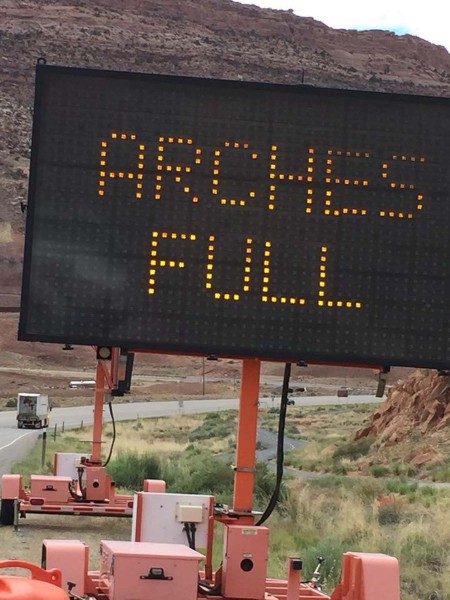 Councilman Baird speaks highly of “10, 15, 20 per cent” growth in tourism. Is that sustainable? Does anyone remember Moab’s very recent past?
Councilman Baird speaks highly of “10, 15, 20 per cent” growth in tourism. Is that sustainable? Does anyone remember Moab’s very recent past?
Last summer, national parks across the American West, and the gateway communities that benefit economically from them, saw jaw-dropping increases in visitation. No one in Moab can forget last Memorial Day Weekend, when Arches National Park closed its entrance for the first time in its almost 100 year history, because it was “FULL.” Gridlock in Moab itself was staggering, with bumper-to-bumper traffic extending for miles. Moab was overwhelmed.
In September, the Associated Press reported shocking increases in visitation at the South Rim of the Grand Canyon, but it noted, “The crowds haven’t just been coming to the Grand Canyon, where a sign ahead of the entrance gates warns of limited parking. The throngs of tourists have been showing up in big numbers at other national parks, including Yellowstone in Wyoming, Yosemite in California and Zion in Utah, driven by good weather, cheaper gas and marketing campaigns ahead of next year’s National Park Service centennial.”
In the HCN article, Canyonlands National Park superintendent Kate Cannon warned, “This is not the experience people expect, nor the experience we want to provide.”
At Zion National Park, Superintendent Jerry Bradybaugh told HCN that record-breaking crowds were straining the Park Service staff and infrastructure to the limit. “This is not a sustainable situation,”Bradybaugh said.
And yet, in Moab and Grand County and, indeed, throughout Southeast Utah, one would be hard pressed to detect ANY expressed concerns from the environmental/progressives about the explosive growth of recreation and tourism, or the impacts that come with them. And certainly there has been no real action.
In fact, it appears they don’t believe a problem exists at all. In a recent “2015 Members/Supporters Survey,” the Southern Utah Wilderness Alliance, Utah’s flagship environmental organization, wrote to its members, “Your support and advocacy is crucial to our success in protecting the redrock, so please take a few minutes to give us your feedback.” The first question defined the scope of the group’s concerns when it asked:
“Which threats to the Red Rock worry you the most?”
Participants were given four options:
TOURISM/RECREATION CONCERNS—THEN & NOW
It wasn’t always like this with SUWA or their kindred spirits at the Grand Canyon Trust (GCT). Bill Hedden is the current executive director of the GCT and an active SUWA board member. In 1998, seventeen years ago, Hedden wrote:
“Throughout the region…visitation has grown by more than 400 percent since 1980. This surge of interest has coincided with a proliferation of new recreation technologies–some exotic like modern ATVs, humvees, mountain bikes, climbing gear, jet skis and hangliders; and others prosaic like water filters, sunscreen and dry suits. Armed with these new toys, today’s legions of visitors can exploit every niche in familiar areas and enter terrain that previously was protected by remoteness…And though it is common to blame the destruction on a small percentage of lawless visitors, my experience brings to mind the old joke that a mere 99 percent of users give a bad name to all the rest. Make no mistake–we are in this together.
“…Everywhere we looked, natural resource professionals agreed that industrial-strength recreation holds more potential to disrupt natural processes on a broad scale than just about anything else. It’s a very tough problem affecting all of us.”
SUWA’s executive director, Scott Groene, expressed similar alarm when he was a regular Zephyr columnist and SUWA’s attorney in Moab. In the December 1993 issue, Scott would offer his own views when he wrote:
“Abiogenesis (the natural process by which life arose from non-living matter such as simple organic compounds) does not cause Moab tourism. People are drawn here by advertising, guidebooks, and publicity created through travel films, newspaper features, outdoor magazines and the like. And because of the large numbers of people being drawn to the Moab area, frequently, and justifiably, federal land managers now lament the damage being done by too many recreationists. Recreation is like any other public land use: too much in the wrong place can be bad”
Groene’s concern was about a film permit that the BLM had granted to National Geographic for a segment of its “Explorer” TV series, “including rafting in Westwater Canyon, climbing, hot air ballooning, a visit to an archaeological site, and a horseback ride; the Moab travel council could not hope for more.” SUWA wrote to the BLM questioning whether the show, “will draw more visitors than the land can handle.”
He concluded, “The BLM will continue to wring its hands about overuse by recreationists. But unless managers get the spine to say no to the causes of too many users, agency staff will get stuck treating the symptoms.”
I cannot overstate how gratifying it was to have Scott Groene as an ally in those early days. We both shared a blinder-free view of the West and the impacts that could diminish it, whether the damage came from an oil rig, a jeep or a bike. Or too many motels and second homes. Scott’s denunciation of the National Geographic program proved his willingness to see all sides of an issue, even the ‘motorized’ vs ‘non-motorized’ component of the tourism debate.
In 1994, The Salt Lake Tribune reported on the growing number of backcountry/wilderness guidebooks being sold and the way different Utah environmental groups were dealing with them. “Within conservation groups,” the Tribune reported, “where-to-go journalism has become a contentious issue. While organizations like the Sierra Club sell trail guides, the Southern Utah Wilderness Alliance will not endorse any guidebook. The decision apparently came after a SUWA official allowed his accolades to be printed on the back of a guidebook. The book revealed details of several little-known hiking destinations in Utah’s San Rafael Swell.”
According to the story, Groene explained, “We have not actually come out yet and started burning guidebooks, but given our goals of trying to protect the land, we felt we had to adopt this policy to be consistent in our position.”
That said it all and should be as true now as it was 20 years ago. And it’s worth repeating, in BOLD type…“…Given our goals of trying to protect the land, we felt we had to adopt this policy to be consistent in our position.”
Groene’s concern for the recreational exploitation of wilderness even extended to OUTSIDE Magazine. In the Zephyr, Groene wrote, “I quit buying Outside magazine a long time ago, when it transformed into little more than a plug for the over-consumption of expensive and unnecessary gear and silly ‘gonzo’ activities. I do still read it, standing at the newsstand, to learn which ‘secret’ places have been doomed by irresponsible publicity (unfortunately, southern Utah sites are frequently targeted). Some federal agency staff have also commented about the magazine’s practice of ‘Outsiding’ little known places.”
‘BACK TO THE FUTURE’…OF 2016
But all that has changed…Years later, SUWA withdrew its opposition to guidebooks and, in fact, engaged one of Utah’s most prolific guidebook authors, Steve Allen, to represent SUWA on a series of promotional cross-country tours. Concerns about media coverage of over-promoting sensitive environmental gems faded.
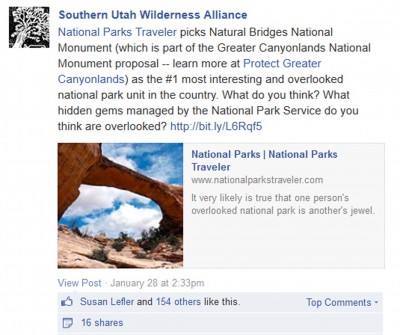 On its facebook page, SUWA posted this for its followers:
On its facebook page, SUWA posted this for its followers:
“‘National Parks Traveler’ picks Natural Bridges National Monument as the #1 most interesting and overlooked national park unit in the country. What do you think? What hidden gems managed by the National Park Service do you think are overlooked?”
SUWA encouraged its followers to provide their favorite “hidden gems.” Many did.
Last year, the Wilderness Society (TWS), in true “Outside Magazine fashion, posted an article called: “America’s Best Kept Secrets—20 Unique National Parks,” including Utah’s Capitol Reef NP. TWS boasted, “Camping, hiking, backpacking, rock climbing, biking, horseback riding and scenic drives offer visitors all sorts of outdoor play,” at Capitol Reef.
This time, the “best kept secrets” list didn’t ruffle a feather and the link was posted on numerous “green” sites. Even the noted author and environmentalist Terry Tempest Williams linked the Wilderness Society’s promotion on her public facebook page. Comments from her followers were almost entirely favorable.
Opposition to tourism/recreation impacts by mainstream greens has slowed to a trickle. Indeed, some of the environmental community’s biggest supporters and most lucrative contributors come from the Outdoor Industry Alliance. Peter Metcalf, the CEO of Black Diamond, a company, “dedicated to designing and constructing the world’s best climbing, skiing & mountain gear,” was an honored guest at SUWA’s 30th anniversary bash.
In 1998, Hedden had warned, “This surge of interest has coincided with a proliferation of new recreation technologies;” today those same recreation technologies are the environmental communities’ most powerful allies. For their support, opposition to recreation impacts has been silenced.
Few will acknowledge or even remember this warning offered by Edward Abbey in 1968:
“Industrial Tourism is a big business. It means money. It includes the motel and restaurant owners, the gasoline retailers, the oil corporations, the road-building contractors, the heavy equipment manufacturers, the state and federal engineering agencies and the sovereign, all-powerful automotive industry. These various interests are well organized, command more wealth than most modern nations, and are represented in Congress with a strength far greater than is justified in any constitutional or democratic sense.”
One would have to go back almost 20 years to find the mainstream greens expressing a sentiment even remotely similar to Abbey’s admonition.
OH…THE IRONY
Finally there is a particular irony when a community, whether it’s Moab or elsewhere, depends so heavily on a tourism/recreation economy and simultaneously loathes any and all forms of energy extraction and production. The one indispensable component of a tourist economy is the one they detest the most.
It is, after all, the production of energy that allows those millions of tourists to travel hundreds or thousands of miles to see the canyon country and create an economy, of sorts, for so many who live there.
And while some may blame the recent tourism explosions on various promotions by local, state and federal initiatives like Utah’s “Mighty Five” tourism blitz, the current low price for gasoline is, by far, the biggest economic driver. When travelers can reduce the cost of just one tank of gas, by as much as $50, the savings have certainly made travel and tourism more affordable for the vacationer and more lucrative for the tourist industry.
Whether they like it or not, proponents of the tourist economy are indebted to the very frackers they detest. As long as the producers keep pulling oil out of the ground, and the price of a barrel of crude stays low, gasoline prices will stay low as well, and tourism and recreation will continue to boom. Development will continue, more tourism infrastructure will be built, demand for low wage labor will expand and problems like affordable housing will grow more acute.
If oil and gas development slows, as it appears to be doing now, it will only happen because the producers have done their jobs too well. A global glut of oil will keep the current prices down for a while. When the supply dwindles and demand accelerates, prices will rise and levels of tourism may fall back. Ironically it will more likely be the continued expansion of oil development, and the highs and lows of that industry, that will offer any constraints on the tourist economy
And while some progressive politicians in Southeast Utah are savvy enough to, at least publicly, support a more diverse economy, the majority of New Moab’s population would clearly be delighted to see energy development in Grand County go away altogether.
The issue was expressed succinctly in the local papers by Moabite Carol Mayer, who was unequivocal in her feelings…
“Not in my backyard,” Mayer proclaimed. “Who has the right to say that any more? In these days of rampant oil and gas exploration, very few…I wish I had several million dollars to fund a lawsuit against the oil companies for the wells, pipelines and truck traffic that will cause irreparable damage to land, air and water in my ‘neighborhood.’”
For Mayer and so many other relatively recent Moab/Grand County residents, they believe any energy extraction and production in their new homeland is nothing short of sacrilege. “For American visitors and concerned locals who live here, we have a big stake in protecting this area.” she wrote. “We taxpayers own it. To stop the abuse, we must act. Conservation voices, rise above those of the rapacious profiteers. We must protect Greater Canyonlands. Shout…’NOT IN OUR BACKYARD.’”
Many agree. Former SUWA staffer and longtime Moab resident Kevin Walker complained at a hearing last summer, “This is a crazy place to have oil and gas drilling.” And in a T-I guest essay, he wrote, “A large majority of Grand County residents, across a wide political spectrum, agree that the recreational and scenic opportunities afforded by public lands are what make this a great place to live. If we want our grandchildren to be able to have similar opportunities, then we need to act now to ensure that undeveloped public lands are not gradually lost to shortsighted development schemes.”
If you could leave it to many of Grand County’s newer residents, they’d ban the energy industry altogether. Perhaps they know it isn’t a realistic approach, but it’s what resides in their 3 am hearts. And the shift in sentiment in this once rural part of the West continues.
Supporters of a continued mineral development and aggressive energy production, like County Councilman Lynn Jackson, argue that efforts to limit mineral development, like the BLM’s “Alternative D’ will cost the county dearly, in economic output and the loss of tax revenues. He believes it could run into the billions of dollars.
Environmentalists question his numbers and believe that recreation and tourism can more than make up for whatever losses may be incurred by a less robust extraction industry. But what would that require? How many tax dollars, for example would be lost? How many tourist start-ups would it take to make up for the loss? If tourism is bulging at the seams, and indeed exploding already, how much more growth would be necessary just to maintain the status quo?
The potash mine, for example, is Grand County’s number one taxpayer, putting more than a million dollars into Grand County government’s coffers. If Potash were to suddenly go belly up, what would it take, in motels and cafes and tour guides and convenience stores, to make up the loss?
Somebody ought to crunch those numbers. I think they’d be in for a shock.
“WHAT WILL THE LAND ALLOW?”
A few years ago, Moab’s Christie Williams Dunton interviewed the outspoken environmentalist/author
Derrick Jensen on Moab’s public radio station, KZMU. She asked him just what ‘sustainable’ meant.
He replied, “You have to ask: ‘What will the land allow?’ That’s the question…end of conversation.”
Does that sound like Moab’s path to the future in any conceivable way?
In the end, an honest Moabite has to ask, could there ever, ever be anything less sustainable than a tourist economy? The last time Moab was truly sustainable was back in 1951, before Charlie Steen and uranium, and before ‘New Moab’ and before anyone had even heard the word.
When Moab was teeming with orchards and melon patches, and small farms, and it took all day just to get from town to Crescent Junction—when Moabites had to rely on their own hard work and sweat and ingenuity to produce food for the table—that’s when Moab was sustainable.
And yet, the tourist/recreation economy in Moab and elsewhere continues to boom, continues to alter the social fabric and the physical landscape at an astonishing rate. Progressives and environmentalists, while seeking the dream of sustainability, continue to delude themselves and continue to ignore the Reality that all but slaps them in the face, every day of the year.
As Wendell Berry observed, “The ideal of the run-of-the-mill conservationist is to impose restraints upon production without limiting consumption or burdening the consciences of consumers.”
“It is, he added, ” what’s wrong with the conservation movement…It has a clear conscience.”
Jim Stiles is Founder and Co-Publisher of the Canyon Country Zephyr.
To read the PDF version of this article, click here.
To comment, scroll to the bottom of the page.
Don’t forget about the Zephyr ads! All links are hot!


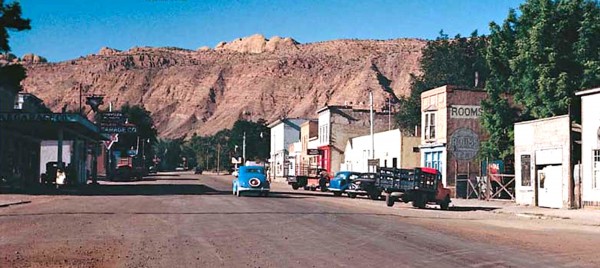

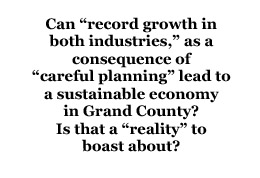
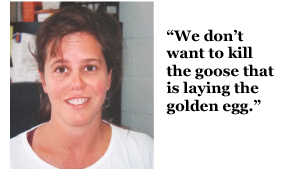
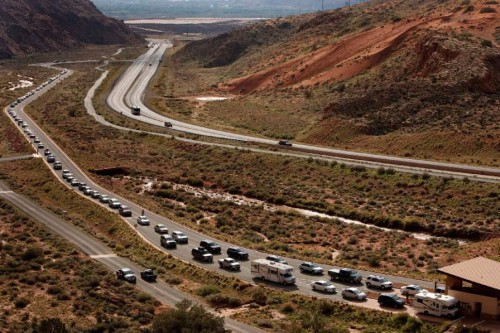
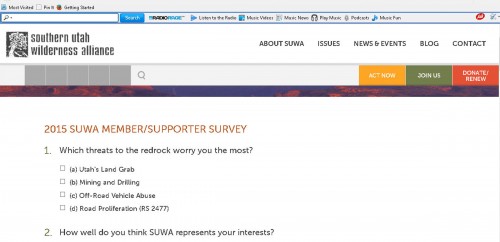
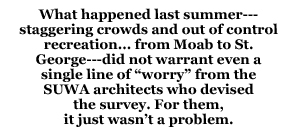
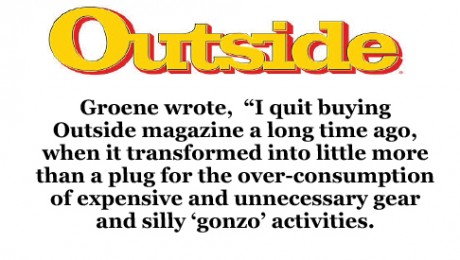
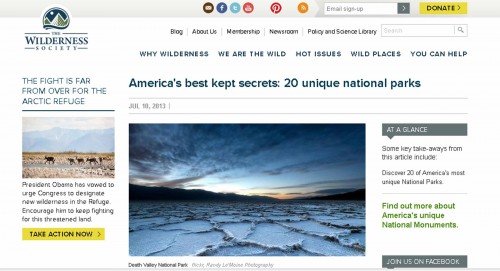

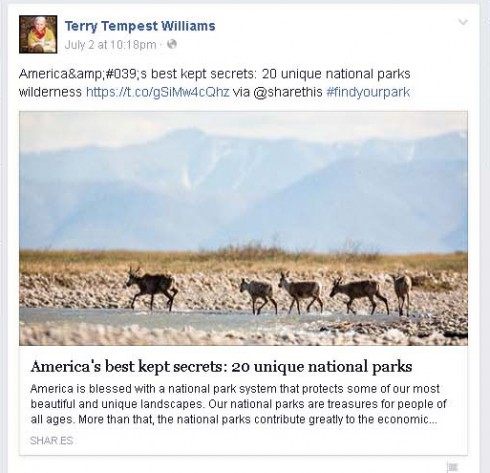
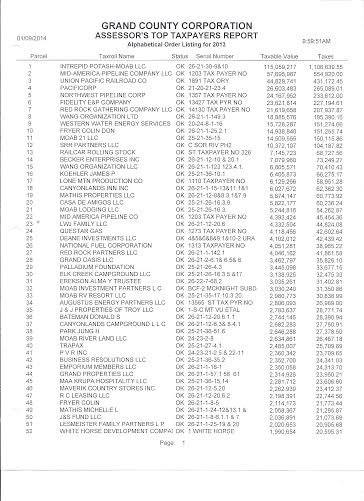


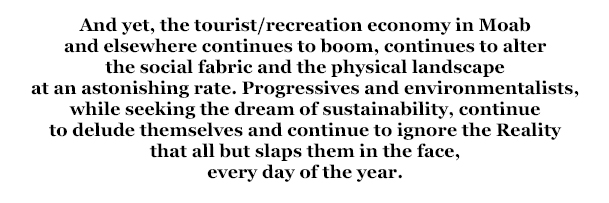
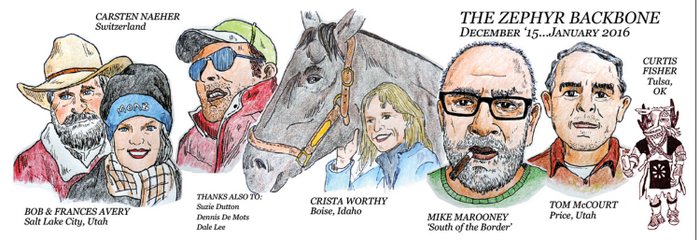

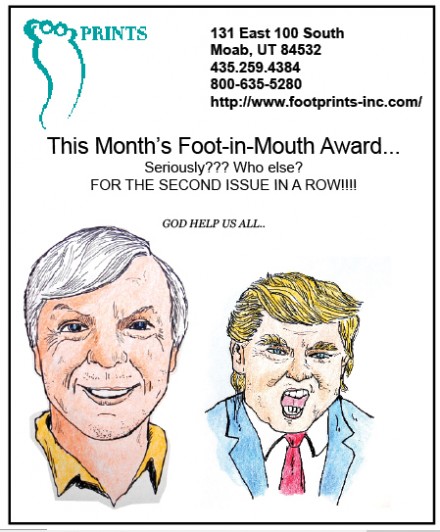
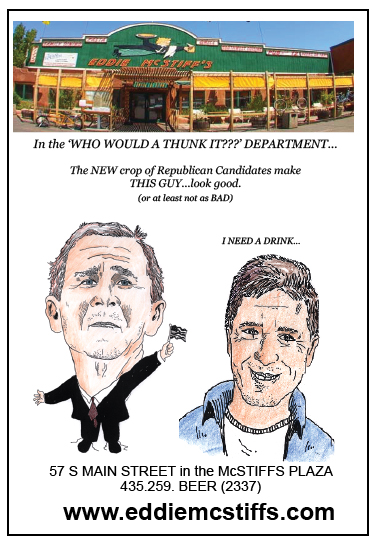
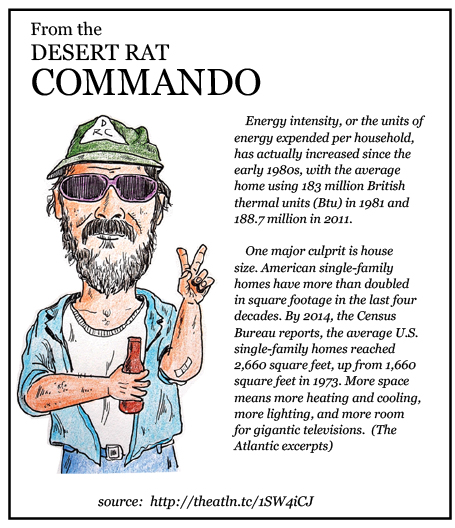
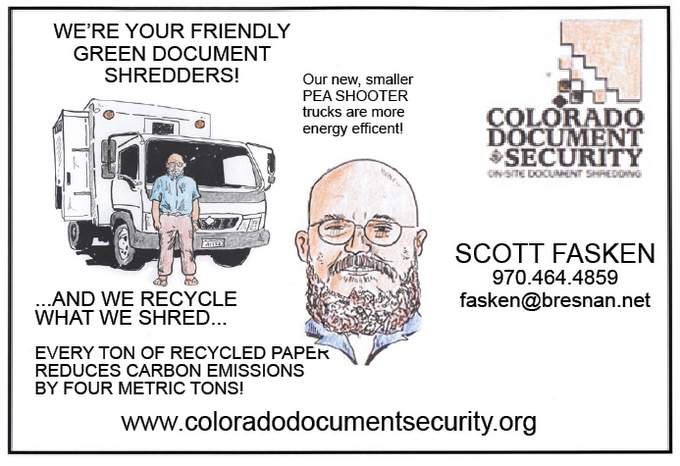
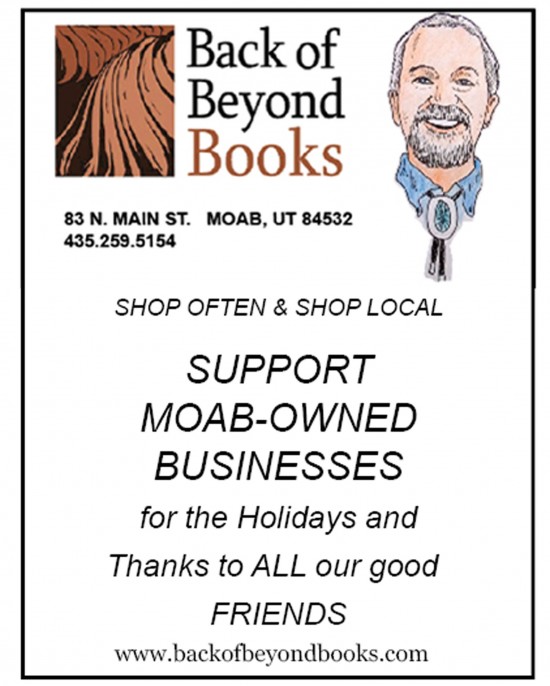
A fine piece, Jim. Here we witness the word “sustainability” being twisted to mean its utter opposite. Orwellian indeed.
Wow, Jim, you organize my thoughts better than I do! I generally just say that people who ride an aluminum bicycle to an anti-mining rally just don’t understand hypocrisy.
As a young ranger in Rocky Mountain NP in the 70s I learned that you CAN love a place to death.
Thanks for such a balanced, objective, LUCID reality check. But you might wanna hire a bodyguard. Or two.
Thanks for telling it like it is. The energy extraction stuff isn’t going to go away, so we are all doomed to the sight of oil rigs, pumpers, solar-cell fields and windmills the size of spaceships on our public lands. It probably won’t matter how remote. The public believes that National Parks are all we need. Perhaps there is a silver lining (pun intended). Check out old silver-and-gold mining areas all over Colorado and you see that 100+ years of leaving a place alone does wonders for the environment. One of my personal favorite hiking haunts in Boulder County was once a town of 2000 people surrounding a whole bunch of mines. There are still some mines in the area, but the wildflowers are terrific and the views quite lovely. So maybe that’s where hope lies–as long as nobody releases millions of gallons of orange heavy-metal-tainted water from those old mines (as the EPA did on Cement Creek near Silverton).
Jim, an interesting article and the problem was stated clearly (recreation use is overwhelming the area). I am part of that recreation crowd (and part of the problem per your article), and have been coming to Moab area or SE Utah since 1984 to mt bike. I was down there fall of 2015 and did see one of these long lines coming out of Arches.
However, I did see any mention of possible solutions to the issue of high recreational use, you only seem to note that it was way better in 1950/60/70 and now it is way bad. Just how would you or a local govt or an Agency (limit or discourage) the public from traveling to Moab area? NPs/BLM CGs by lottery permit and advance appointment only? This area of SE Utah is known worldwide for its recreation and NPs, many of the people I meet in the local BLM campgrounds are from Germany, Australia, etc. I doubt if there is any way to go back to Moab circa 1950 now?
Anyhoo, the word “sustainability” is a nice concept but in my opinion no one really knows what it really means or how to measure it or how to get there…yet…
rick_arsie@frontiernet.net
How true your statements. I guess it is the price of progress?
You talk succinctly about how SUWA’s and others views towards the recreation industry have changed as if nothing else has changed. I believe we have learned that as people experience the natural beauty of our lands, their appreciation grows and their support for protecting same does as well. While you can claim that the “industry” has financial incentives, that industry is composed of individuals who are vastly ardent conservationists. The fact they have financial resources and political clout is only better. The Outdoor Retailer Show here in Utah is a well documented case of the clout and change that can be brought on the behalf of conservation here in Utah. The individuals who come here to view and learn to value Moab’s beauty are the same voters whose will has directed politicians to protect these lands yesterday and today.
Teddy Roosevelt was an ardent hunter and sportsman. Exposed to the beauty of our nations lands he came to say, ” We have become great because of the lavish use of our resources. But the time has come to inquire seriously what will happen when our forests are gone, when the coal, the iron, the oil, and the gas are exhausted, when the soils have still further impoverished and washed into the streams, polluting the rivers, denuding the fields and obstructing navigation.” He went on to pass the 1906 Antiquities Act and protect 230 million acres of public lands, but only after contemplating the loss of what he had come to love so strongly.
Thank everything that is or has ever been holy, someone else is not either a, retarded hippie who will not listen to reason, or an idiot red neck who will not listen to reason! I was born in Moab 50 + years ago and I have to say I have often felt like I was completely and utterly alone.
Thank you Jim. This is such a well thought out piece of writing, well done sir!
Everyone who says they want to do whatever makes them money, no matter what the cost to the land is bats and I have argued many a long hour with them.
Equally batty are the ones who will squeal about driving all over, but insist that oil be shipped across the oceans, no matter what the cost, so they can feel good. Can you say hypocrite?
Please God let this be some kind of meet in the middle mentality that will suddenly overcome America with realistic ideals on both ends?
I know, I’m being overly optimistic. 🙂